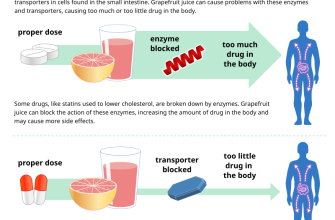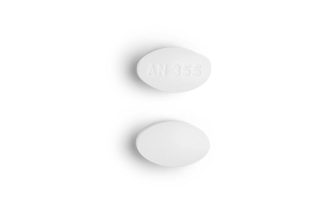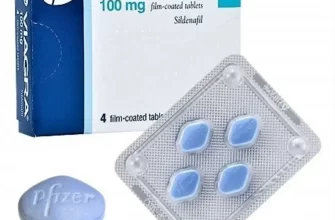Need a clear understanding of Viagra’s various formulations? Focus on the key differences: Sildenafil Citrate is the active ingredient in Viagra, but it’s available in different forms impacting absorption and onset time. This means choosing the right form depends on your individual needs and preferences.
Consider immediate-release tablets for rapid action, typically felt within 30-60 minutes. This is ideal for situations where spontaneity is important. Alternatively, prolonged-release formulations offer a longer duration of effect, potentially lasting up to 12 hours. This option might suit individuals seeking sustained performance over a longer period. Finally, you might find Sildenafil available in chewable tablets or even as an oral suspension, offering convenience for certain situations.
Always consult your doctor before choosing a specific Viagra compound form. They can assess your health status and recommend the most suitable option, ensuring both efficacy and safety. This personalized approach is crucial for optimal results and minimizing potential side effects. Remember, your doctor possesses the expertise to guide you towards the best choice for your circumstances.
- Viagra Compound Form: A Detailed Overview
- Oral Forms: Tablets and Dispersible Tablets
- Other Forms: Limited Availability
- Comparison Table: Form and Absorption
- Choosing the Right Form
- Understanding Sildenafil Citrate: The Active Compound in Viagra
- Dosage and Administration
- Potential Side Effects and Precautions
- Viagra’s Chemical Structure and its Role in Erectile Dysfunction
- Understanding the Molecular Mechanism
- Chemical Structure-Activity Relationship
- Different Formulations of Viagra: Tablets, Oral Dispersible Tablets, etc.
- The Bioavailability and Pharmacokinetics of Sildenafil Citrate
- Potential Drug Interactions with Sildenafil Citrate
- Nitrates: A Serious Interaction
- Alpha-Blockers: Blood Pressure Considerations
- CYP3A4 Inhibitors: Metabolism Impact
- Other Potential Interactions:
Viagra Compound Form: A Detailed Overview
Sildenafil citrate, the active compound in Viagra, exists in various forms impacting absorption and efficacy. Understanding these forms is key to optimizing treatment.
Oral Forms: Tablets and Dispersible Tablets
The most common form is the oral tablet, offering consistent sildenafil release. Dispersible tablets, designed to dissolve quickly in the mouth, offer faster onset for some individuals. Consider individual needs and consult a physician for personalized recommendations.
Other Forms: Limited Availability
While less prevalent, other formulations exist, including topical creams and injections. These are generally reserved for specific clinical situations or individual patient needs. Research current availability with a healthcare professional before trying alternative forms.
Comparison Table: Form and Absorption
| Form | Absorption Rate | Onset of Action | Considerations |
|---|---|---|---|
| Oral Tablet | Moderate | 30-60 minutes | Commonly prescribed, reliable absorption. |
| Oral Dispersible Tablet | Fast | 15-30 minutes | Faster onset, suitable for specific needs; may have slightly different taste. |
| Topical Cream (if available) | Variable | Variable | Localized application, may have lower systemic absorption; Requires further research on its efficacy and availability. |
| Injection (if available) | Rapid | Immediate | Reserved for specific clinical situations; administered by a medical professional. |
Choosing the Right Form
Factors influencing form selection include individual metabolism, desired onset time, and presence of other health conditions. Always discuss optimal form with your doctor, who can assess your specific needs and make informed recommendations. Improper use can lead to adverse effects.
Understanding Sildenafil Citrate: The Active Compound in Viagra
Sildenafil citrate is the active pharmaceutical ingredient in Viagra, responsible for its erectile dysfunction treatment effects. It works by inhibiting a specific enzyme, phosphodiesterase-5 (PDE5), leading to increased blood flow to the penis. This enhanced blood flow facilitates penile erection in response to sexual stimulation. The precise mechanism involves increased levels of cyclic guanosine monophosphate (cGMP), a crucial molecule for smooth muscle relaxation.
Dosage and Administration
Sildenafil citrate comes in various dosages, typically ranging from 25mg to 100mg, prescribed based on individual needs and medical history. It’s usually taken orally, approximately one hour before anticipated sexual activity. Doctors consider factors like overall health, other medications, and potential side effects when determining the appropriate dosage. Always adhere to your physician’s instructions.
Potential Side Effects and Precautions
Common side effects include headache, flushing, nasal congestion, and visual disturbances. More serious, though rare, side effects exist. Individuals with certain cardiovascular conditions, such as unstable angina, should exercise caution and discuss use with their doctor. Concomitant use with nitrates is strictly contraindicated due to the risk of dangerously low blood pressure. Patients should inform their healthcare providers about all medications they are taking before starting Sildenafil citrate.
Viagra’s Chemical Structure and its Role in Erectile Dysfunction
Viagra, or sildenafil, boasts a complex chemical structure crucial to its function. Its chemical name is (6R,12aR)-6-methyl-6,7,12,12a-tetrahydro-2-methyl-5H-benzo[6,7]cyclohepta[1,2-b]pyrano[2,3-d]pyrimidin-5-one.
Understanding the Molecular Mechanism
Sildenafil’s effectiveness stems from its selective inhibition of a specific enzyme: phosphodiesterase type 5 (PDE5). PDE5 normally breaks down cyclic guanosine monophosphate (cGMP), a molecule crucial for penile erection. By inhibiting PDE5, sildenafil allows cGMP levels to rise, leading to smooth muscle relaxation in the penis and increased blood flow, ultimately facilitating an erection.
- Selective Inhibition: Sildenafil’s selectivity for PDE5 minimizes side effects by not affecting other PDE enzymes significantly.
- cGMP Pathway: Understanding the cGMP pathway is key to grasping sildenafil’s mechanism of action. Increased cGMP directly impacts blood vessel relaxation.
- Blood Flow Enhancement: The increased blood flow to the penis is the direct result of the smooth muscle relaxation.
Chemical Structure-Activity Relationship
Slight alterations to sildenafil’s structure significantly impact its activity and potency. Researchers have explored various analogs, seeking to improve efficacy or reduce side effects. This research helps refine the understanding of which structural components are vital for PDE5 inhibition.
- The specific arrangement of atoms within the sildenafil molecule directly influences its binding affinity to PDE5.
- Modifications to certain functional groups can drastically change the drug’s potency and its selectivity.
- Studying these structure-activity relationships informs the design of future erectile dysfunction treatments.
Different Formulations of Viagra: Tablets, Oral Dispersible Tablets, etc.
Viagra comes in several forms to suit individual needs and preferences. The most common is the standard tablet, typically taken with water. However, other options exist.
- Oral Dispersible Tablets: These tablets dissolve quickly in the mouth, offering a faster absorption rate compared to standard tablets. This can be beneficial for individuals who have difficulty swallowing pills or prefer a quicker onset of action. They typically require no water.
- Generic Versions: Many generic versions of sildenafil citrate (the active ingredient in Viagra) are available. These generally offer the same efficacy at a lower cost. Always ensure you’re purchasing from a reputable source.
Choosing the right formulation depends on your personal circumstances. Factors to consider include ease of swallowing, desired speed of onset, and budget.
- Consult your doctor: Before starting any medication, including Viagra or its generic equivalents, always consult your physician. They can assess your health and determine the appropriate dosage and formulation for your specific needs.
- Check for interactions: Inform your doctor about all medications and supplements you are currently taking to avoid potential interactions.
- Follow instructions carefully: Adhere to the prescribed dosage and administration instructions provided by your doctor or pharmacist. Never exceed the recommended dose.
Remember, safe and effective use of Viagra hinges on responsible use and medical oversight. Always prioritize your health and seek professional advice.
The Bioavailability and Pharmacokinetics of Sildenafil Citrate
Sildenafil citrate, the active ingredient in Viagra, exhibits excellent oral bioavailability, typically reaching peak plasma concentrations within 30 to 120 minutes of ingestion. This timeframe can vary depending on factors like food intake; consuming a high-fat meal delays absorption.
Absorption is largely complete after oral administration. The drug undergoes extensive first-pass metabolism in the liver, primarily via the CYP3A4 isoenzyme. This hepatic metabolism significantly reduces the amount of unchanged sildenafil reaching systemic circulation. Co-administration with strong CYP3A4 inhibitors can substantially increase sildenafil plasma levels, potentially leading to increased side effects. Conversely, CYP3A4 inducers may decrease sildenafil concentrations.
Sildenafil is approximately 96% bound to plasma proteins. Its distribution volume is relatively large. The elimination half-life is around 4 hours. The primary route of excretion is via the feces (approximately 80%), with the remaining portion eliminated in the urine.
Clinical Implications: These pharmacokinetic properties dictate dosing regimens and potential drug interactions. Individual variations in metabolism exist, influencing drug response. Careful consideration of concomitant medications is necessary to avoid adverse effects resulting from altered sildenafil levels. Patients with hepatic impairment require dosage adjustments to mitigate the risk of toxicity due to reduced clearance. Renal impairment does not significantly affect sildenafil elimination.
Specific recommendations: Always follow prescribed dosages and consult a healthcare professional before combining sildenafil with other medications, especially those affecting the CYP3A4 enzyme system. Monitor for any unexpected side effects.
Potential Drug Interactions with Sildenafil Citrate
Sildenafil citrate, the active ingredient in Viagra, interacts with several medications. Always inform your doctor about all medications you’re taking, including over-the-counter drugs and supplements, before starting sildenafil. This proactive step minimizes the risk of adverse effects.
Nitrates: A Serious Interaction
Combining sildenafil with nitrates, often prescribed for chest pain (angina), can cause a dangerous drop in blood pressure. This combination can lead to severe hypotension, dizziness, and even fainting. Avoid using sildenafil if you’re taking nitrates.
Alpha-Blockers: Blood Pressure Considerations
Alpha-blockers, used to treat high blood pressure and benign prostatic hyperplasia (BPH), can also interact with sildenafil. This combination may significantly lower blood pressure. Your doctor might adjust your dosage or recommend an alternative medication.
CYP3A4 Inhibitors: Metabolism Impact
Certain medications inhibit the CYP3A4 enzyme, which metabolizes sildenafil. This can lead to increased sildenafil levels in your blood, potentially increasing the risk of side effects. Examples include ketoconazole, erythromycin, and ritonavir. Your doctor may need to adjust your sildenafil dose if you’re taking one of these inhibitors.
Other Potential Interactions:
Sildenafil can interact with other medications, including certain antidepressants, antifungals, and HIV protease inhibitors. Consult your physician or pharmacist for detailed information on potential interactions with your specific medications.
Remember: This information is for educational purposes and doesn’t replace professional medical advice. Always discuss your medications with your doctor before starting sildenafil or making any changes to your medication regimen.










